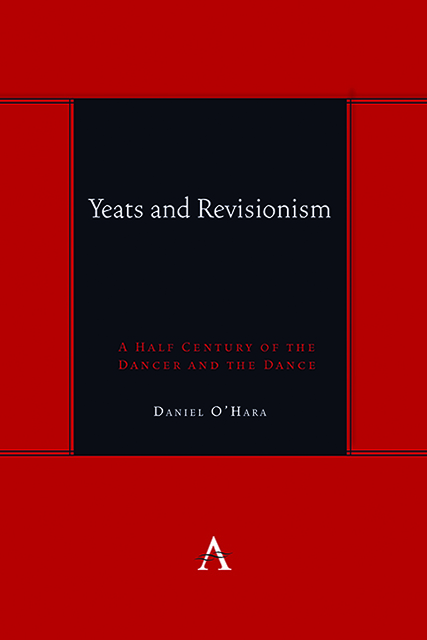Book contents
- Frontmatter
- Dedication
- Contents
- Acknowledgments
- Preface
- Introduction: Dancer and Dance: Yeats’s Romantic Modernism and Critical Revisionism
- Chapter 1 The Irony of Tradition in W.B. Yeats’s Autobiography: Dialectical Hermeneutics Beyond the New Criticism
- Chapter 2 The Specialty of Self-Victimization: On Antithetical Revisionism
- Chapter 3 Yeats in Theory: Blackmur, Bloom, De Man and Hartman
- Chapter 4 The Divisions of Yeats Studies Continued
- Chapter 5 Modernism’s Global Identity: on the Dogmatic Imagination in Yeats, Freud and Beyond
- Chapter 6 Yeats With Lacan: Toward the Real Modernism
- Chapter 7 The Spirit Medium: Yeats, Quantum Visions and Recent Lacanian Studies
- Chapter 8 And All the Ceremonies to Come: Of High Modernism, Visionary Violence and Post-Marxism
- Afterword: The Reader in Yeats
- Bibliography
- Index
Chapter 5 - Modernism’s Global Identity: on the Dogmatic Imagination in Yeats, Freud and Beyond
Published online by Cambridge University Press: 08 June 2023
- Frontmatter
- Dedication
- Contents
- Acknowledgments
- Preface
- Introduction: Dancer and Dance: Yeats’s Romantic Modernism and Critical Revisionism
- Chapter 1 The Irony of Tradition in W.B. Yeats’s Autobiography: Dialectical Hermeneutics Beyond the New Criticism
- Chapter 2 The Specialty of Self-Victimization: On Antithetical Revisionism
- Chapter 3 Yeats in Theory: Blackmur, Bloom, De Man and Hartman
- Chapter 4 The Divisions of Yeats Studies Continued
- Chapter 5 Modernism’s Global Identity: on the Dogmatic Imagination in Yeats, Freud and Beyond
- Chapter 6 Yeats With Lacan: Toward the Real Modernism
- Chapter 7 The Spirit Medium: Yeats, Quantum Visions and Recent Lacanian Studies
- Chapter 8 And All the Ceremonies to Come: Of High Modernism, Visionary Violence and Post-Marxism
- Afterword: The Reader in Yeats
- Bibliography
- Index
Summary
The question of identity is never a purely academic matter. As we see every day, in America's War Against Terrorism, civilizations clash over identity, with great violence. This is especially true in the modern world, in which technology has fostered the power to lay waste to combatants and civilians alike on a massive scale without precedent in human history. How identities are formed, what shapes they take, how they defend themselves once formed and how they change, if they really do, are all questions embedded within a larger philosophical question of identity, particularly with the global advent of modernity, which early in the last century struck the minds of leading Western intellectuals with considerable force. This larger question, traditionally phrased, is: “What is man?” By which, I mean here, what does it mean to say that a person, a culture, a world or a historical period, has an identity? The question of identity is really the question of possessing an essence.
However, that may be in general, W. B. Yeats and Sigmund Freud conceive of human identity as being substantially dependent, for its essence (whatever that may be), upon the operation of a comprehensive and coherent system of symbols whose cultural power they call, respectively, myth or illusion. Although Yeats thinks that all myth is true in some fundamental sense, and Freud thinks that all myths are illusory and so false if pandemic, both agree that the system of interlocking symbols constituting the cultural machinery of a society works by means of great coordinating mythologies, or the manifold illusion to produce and enforce identity. What is striking to both of them about modern society, especially after the First World War, is the absence of any master symbol to stitch together the symbolic strands or to forge, into a significant whole, the chain of elements now making up cultural identity. Not only God, but also every other candidate for the position of master symbol appears outmoded, disposable, if not already disposed. Despite their considerable differences, Yeats the occult intellectual and Freud the Enlightenment enthusiast view this unparalleled situation in human history—in which the totality of a culture's resources to create and sustain identity appears to function without any authoritative central symbol—as apocalyptically dire and potentially destructive of the entire species.
- Type
- Chapter
- Information
- Yeats and RevisionismA Half Century of the Dancer and the Dance, pp. 87 - 104Publisher: Anthem PressPrint publication year: 2022



